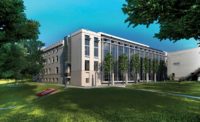Richard Thorn, president and CEO of the Associated General Contractors of Utah, says his members do the bulk of the work with the agency and that UDOT is well respected in the building community. "AGC and UDOT have developed a great partnership. I've worked with colleagues across the country, and there is not a better DOT or better relationships anywhere," Thorn says.
"UDOT is not afraid of a challenge and they will not try to push all the risk onto any one party, and that is unique," he adds. "They are also open to new and different delivery methods—real leaders among transportation departments in their willingness to innovate on project delivery."
UDOT's massive pre-Olympics expansion of I-15 was the largest application of design-build in the U.S. at the time. UDOT has continued to rely on design-build for several projects a year, including last year's expansion of the Bangerter Highway (ENR Mountain States, 8/27/12 p. MS45). However, the CORE and MVC projects were delivered with CM/GC contracts. Braceras says CM/GC delivery allowed contractors to do substantially more paving on the MVC project than expected.
UDOT has also embraced rapid bridge replacement (RBR), where a highway bridge is fully constructed off site and then moved into place, thus eliminating the need for extended road closures. Since it was first applied in Utah on a section of I-215 in 2006, the department has used RBR on stretches of I-80 and I-15 in Davis County. Sixty-three bridges were replaced or constructed for the CORE project, the majority of them using RBR. The Sam White Bridge, at 354 ft long and 80 ft wide, was constructed and then moved into place in one night using self-propelled modular transporters, or SPMTs, making it the largest bridge in the Western Hemisphere to be moved by that method, UDOT says.
Along with embracing alternative project delivery, the department experiments with and implements traffic management solutions unique to the region. "We are building continuous-flow interchanges now and diverging-diamond interchanges, and working with the super-street concept," Braceras says. That's an intersection where drivers wanting to turn left at an intersection are directed into a U-turn lane, thus freeing up the intersection for through traffic.
Last year UDOT completed and opened the state's first road using flex-lanes (ENR Mountain States, 8/27/12 p. MS45) to deal with heavy traffic loads at different times of the day. The flex-lanes on 5400 South use signals over each lane that indicate traffic direction and turns. The signals change to allow additional lanes of traffic, depending upon the flow.
Even during the recession, UDOT garnered key pieces of the state-funding pie. It kept transportation issues top-of-mind with lawmakers and the public and pushed passage of a ballot measure in 2006 that raised the state sales tax by a quarter-cent, with a portion going specifically to highway projects. Additionally, since 2005 hundreds of millions in state funds have been directed to transportation
"Our megaprojects like CORE and Mountain View were completed using only state funds. We have not tapped federal sources at all," says Njord. "That is something we are very proud of. We have funding mechanisms in place, and we've leveraged our funding through bonds. We've built our (big) projects—and now we can start paying them back."
Njord says with the latest large projects completed, the agency will cut back on its activities a bit and adjust its budget toward maintenance of existing roads.
Braceras says he is also pleased with the outlook for the state's highways.
"Right now, we are very pleased with the condition of our pavements, and we have the resources to maintain them well," he says. "We have some bridges we have to look at that were built in the '60s and '70s that we'll have to replace in the future. But by just using state dollars, we've been able to add lanes and maintain our infrastructure, which I'm proud of and which some people might actually be jealous of."





